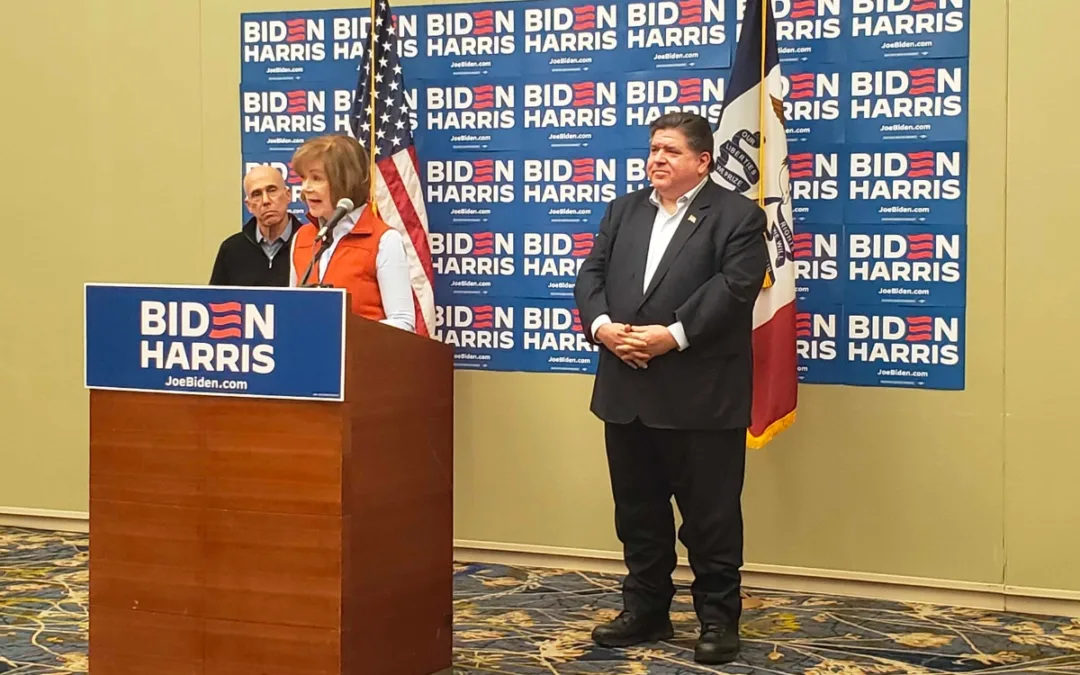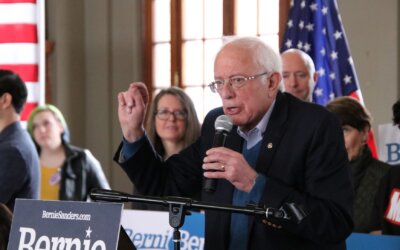
Donald Trump will be in Iowa today, touring an ethanol plant in Council Bluffs, to celebrate the Environmental Protection Agency’s lift of a seasonal ban on E15, allowing for year-round sale of the gasoline mixture containing 15% ethanol.
The ethanol tour was recently announced with Trump set to come to the state for a Republican Party fundraising event.
The move to enforce year-round production and consumption of certain ethanol blends comes at a convenient time for Trump, but hasn’t gone without criticism. Farming advocates and Democratic presidential candidates call it an empty gesture, considering what else the White House is doing on biofuel matters.
During his administration, Trump has been wreaking havoc on the ethanol industry by administering small refinery waivers to nearly any company that has asked for one.
Refinery Waivers Undermining Biofuel Market
Small ethanol refinery waivers were established in the first version of the Renewable Fuel Standard (RFS1) under the Energy Policy Act of 2005 (more detail below) to allow smaller refineries to release gasoline mixes without ethanol in them to keep their costs down. While the 2005 policy mandated that a certain amount of renewable fuels be mixed into the supply of gasoline, the new production costs created a barrier for truly small refineries that were entering the marketplace or growing their business
After the second rendition of the Renewable Fuel Standard (RFS2) was developed in 2010, the ethanol market grew for years on end – seeing its first drop off in years in 2018. During the Obama Administration, with RFS2 in place, a relatively low number of small refinery waivers were handed out (around 5 to 10 a year on average).
However, in 2016 to 2017, after Trump’s inauguration, the EPA relaxed their waiver policy significantly and granted 54 refinery waivers. If this were due to an increase of small refineries, the ethanol market would be in great shape.
However, Geoff Cooper, CEO of the Renewable Fuels Association, told Farm Journal that 24 of the waivers granted in this time period were handed out against the recommendation of the Department of Energy, who the EPA is supposed to take guidance from.
This means that the denial of 24 of those refinery waivers would not have impeded the refineries’ ability to compete in the market. Instead, they were simply given to whoever wanted them, including giant oil and gas companies like Exxon and Chevron.
Rather than helping corn farmers by growing the ethanol market, Trump has actually used RFS2 against them, destroying demand for more than 2.6 billion gallons of ethanol, that would have been mixed into the nation’s gasoline supply, by allowing oil giants to effectively opt-out of using legally-mandated ethanol.
According to the DOE, there are currently 39 pending requests for small waiver refineries. If these are simply handed out, the way they were in 2016 and 2017, Cooper explained the market for ethanol could be “completely destroyed.”
[inline-ad id=”0″]
Helpful Political Timing
The EPA’s lift of the ban comes at a great time for Trump for several reasons. First, the summer season is beginning. Under the most recent version of the RFS, the summer was the one season in which ethanol blends were limited.
It was believed the emissions from the E15 fuel mix were stronger contributors to smog during warmer months due to a faster evaporation process – though it is now shown to be a lower contributor to smog than E10, which has been on the market year-round since the 1970s.
Second, amidst ongoing tariff battles with China and others, which have damaged the agricultural economy across the Midwest, the announcement comes at a time when patience is running thin for farmers.
History Of The RFS
The RFS has been around since 2007, when the Energy Policy Act of 2005 was implemented by the EPA. Trump’s administration has since put a halt to the environmental focus of the legislation – as well as many others.
The small ethanol refinery waivers are what makes the EPA’s E15 ruling an empty deliverable for Trump. Yes, he is delivering on his promise to allow more ethanol into the market. But because any company can opt-out of mixing ethanol into their fuel-blends, the new E15 stance doesn’t create more demand overall.
Energy Policy Act of 2005
The first Renewable Fuel Standard, well-titled RFS1, was established under this policy. The initial goal of this act was to set a benchmark for getting refineries blending ethanol, and providing a mandatory market for qualifying biofuels.
The major provisions of the Energy Policy Act were:
- Mandate a minimum of 4 billion gallons of renewable fuel be used in the nation’s gasoline supply in 2006.
- Raise that minimum usage to 7.5 billion gallons by 2012.
- Create compliance standards for suppliers.
- Create a tracking system for credit verification and trading purposes, based on Renewable Identification Numbers (RINs). These proved to be problematic.
- Create special treatment provisions for small refineries to assure they could compete in the marketplace.
- Create other, general waiver provisions.
Effectively, this act established a market for ethanol blends, set initial goals for usage, created ways to track production, and made sure small refineries could have a space in the market with bigger companies.
Energy Independence and Security Act of 2007
Almost immediately after the Energy Policy Act of 2005 was implemented in April of 2007, the EPA began developing this second piece of legislation to again grow the renewable fuel market. This created a new RFS, called RFS2.
By the time it is was implemented in February of 2010, the main goals and provisions of RFS2 were:
- Categorize renewable fuels into four categories, allowing different goals to be set for each.
1) Total renewable fuels
2) Advanced biofuels
3) Biomass-based diesel
4) Cellulosic biofuels - Up the mandated minimum of renewable fuels in the nation’s gasoline supply to 9 billion gallons in 2008.
- Set a long-term goal to grow this number to 36 billion gallons by 2022 (at least 16 billion gallons of cellulosic biofuels and a cap of 15 billion gallons of corn-starch ethanol).
- Set a greenhouse gas (GHG) emission reduction standard (with exception to certain existing facilities).
- Set a standard for renewable fuel production, creating an amended definition of renewable biomass, and creating certain land-usage restrictions.
- Set specific deadlines for announcing the EPA’s annual standards.
- Generated greater specificity on RIN oversight (RINs have still been problematic since) and potential waiver requests.
This act set more ambitious goals for the renewable markets, but also provided greater detail as to who should be allowed refinery waivers. Details that the Trump Administration has declined to follow.
by Josh Cook
Posted 6/11/19

Original, heels or boots: Pritzker says leading Republicans are all MAGA
Illinois Gov. JB Pritzker said all three leading candidates in the Iowa GOP caucus—Donald Trump, Nikki Haley, and Ron DeSantis—represent the same...

Trump tells supporters it is worth dying to caucus for him
Former President Donald Trump continues to encourage his massive base to turn out in droves for him during Monday’s Republican caucus and told an...

Climate change protesters disrupt Ron DeSantis event
Climate protesters disrupted a Gov. Ron DeSantis campaign event in Ames on Thursday night. Three protesters were escorted out of the room at...

Evangelical leaders predict huge caucus turnout, downplay endorsements
Iowa caucus candidates have racked up big-name endorsements—including a notable last-minute flip flop—but one evangelical leader said none of that...

We went to Vivek Ramaswamy’s ‘Vektoberfest.’ Here’s what we saw
As I sat on a park bench eating a bacon-grilled cheese sandwich, drinking an Exile Ruthie straight from the tap, and chit-chatting with a few folks,...

Tim Scott says kids need more exposure to conservatism
While many Republicans across the country have spent the last few years arguing that public schools are being used to indoctrinate kids into leftist...




